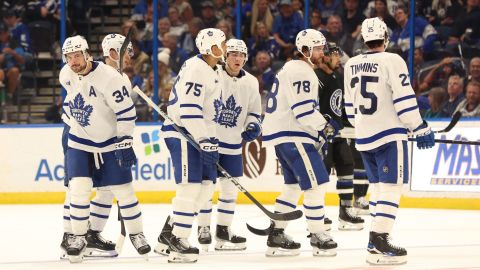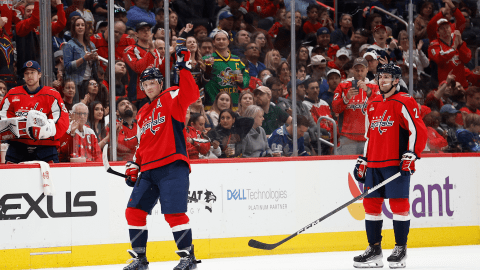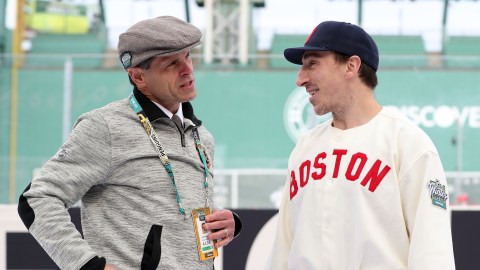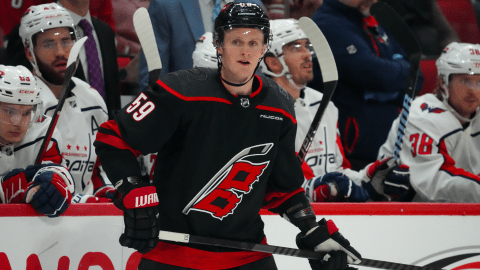NHL free agency is a time when teams get too excited and overspend to sign veteran players.
So few teams have completed their championship puzzle by making a huge splash in free agency. To find the most recent example of a team that succeeded via that route, you have to go back to 2009, when the Chicago Blackhawks signed Marian Hossa.
That hasn’t deterred teams from spending big, but we could be seeing a change for the better. Free agency opened Wednesday, and there weren’t any egregious long-term deals signed. One reason for this turnaround might be the period before free agency when teams are able to meet with players, examine their options and be best prepared to handle the salary cap.
“Well, free agency is a frenzied time, so you can get caught up in the hype of it,” Bruins general manager Don Sweeney said Wednesday.
“I think the visiting period and interview period has sort of tempered that to some degree because you sort of have an idea. I think teams are very aware of each others’ cap situations, as are the free agent markets. I think everybody has the knowledge now, and the ability to forecast where you’re going to be, who has the necessary space to be able to put these deals together, and the agents know it.”
Here are the best and worst contracts of free agency so far.
Best
Justin Williams, Washington Capitals (two years, $6.5 million)
Williams was expected to sign for a lot more given his historic Game 7 scoring record, playoff experience and the fact he’s still able to provide 35 to 50 points in a second- or third-line role. He’s the type of player who could help the Capitals get to the next level: reaching the Eastern Conference finals. They were so close last season, losing to the New York Rangers in Game 7 of the East semis, and Williams could provide the necessary scoring depth and clutch play to give them an even better chance next season.
Matt Beleskey, Boston Bruins (five years, $19 million)
Beleskey was expected to receive more than $4 million — possibly as much as $5 million — per season as one of the top wingers on the market coming off a career-high 22 goals and an impressive playoff run for the Anaheim Ducks.
But the Bruins were able to sign him for just $3.8 million per season, and he will provide Boston with much-needed scoring, depth and toughness at left wing — a position that was a weakness for the B’s entering free agency.
Erik Condra, Tampa Bay Lightning (three years, $3.75)
The Lightning bolstered an already-deep group of forwards by signing Condra to provide more scoring and penalty-killing to the bottom six. As his HERO chart shows, Condra does a nice job of driving puck possession in limited even-strength minutes.

Andrej Sekera, Edmonton Oilers (six years, $33 million)
The Oilers desperately needed a top-pairing defenseman, and they found their man in Sekera. A salary cap hit of $5.5 million isn’t bad at all for a veteran blueliner who can drive puck possession, provide decent scoring production and take on tough zone starts against the opponent’s top forwards. He’s the two-way presence on the blue line that Edmonton has lacked for many years.
Worst
Francois Beauchemin, Colorado Avalanche (three years, $13.5 million)
The Avalanche need a top-four defenseman, and they won’t get it with Beauchemin. The 35-year-old veteran doesn’t have the skating ability or quickness to keep up with the best forwards, and that was evident in this year’s Western Conference finals against the Chicago Blackhawks. Beauchemin will be a good role model for the young defensemen already on the Colorado blue line, but that’s not a player you pay $4.5 million annually.
Gregory Campbell, Columbus Blue Jackets (two years, $3 million)
This signing doesn’t make much sense for the Blue Jackets. They don’t need any more toughness in their bottom six, and Campbell won’t provide much offensive production (12 points in 70 games last season). He also does very little to drive puck possession, and his 41.37 Corsi-for percentage at 5-on-5 last season was the 11th-worst among centers with 500-plus minutes played.
Columbus should have given this roster spot to a younger player with more upside.
Thumbnail photo via Marie Sorvin/USA TODAY Sports Images



